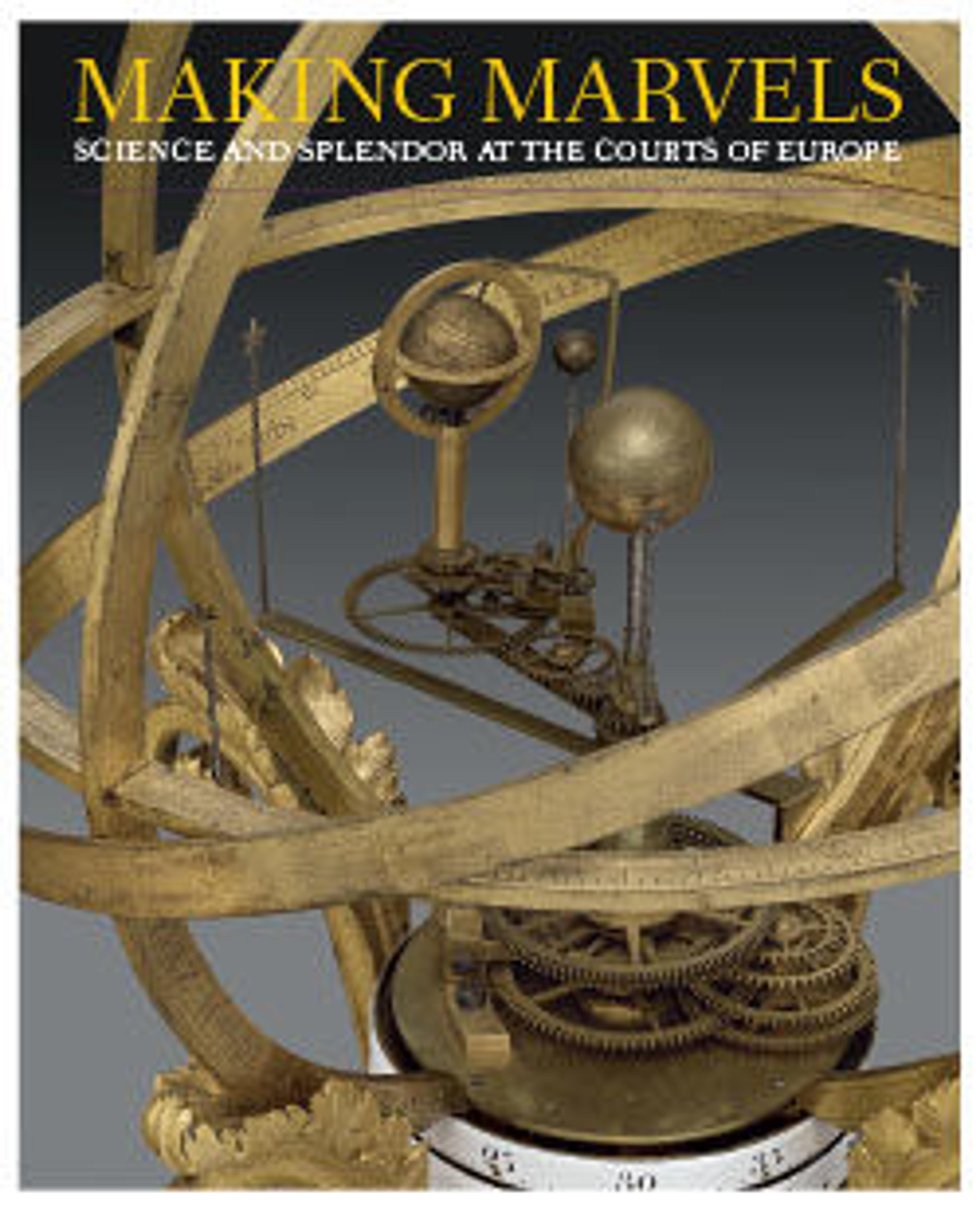English
"The Elephant Clock", Folio from a Book of the Knowledge of Ingenious Mechanical Devices by al-Jazari
This page comes from a treatise on fantastic devices invented by the author al‑Jazari. His elephant clock was especially intricate: every half hour, the bird on the dome whistled; the man below dropped a ball into the dragon’s mouth; and the driver hit the elephant with his goad. While illustrated manuscripts were growing increasingly popular at the time, this folio is a rare survival from Syria, where few such manuscripts are known from this date.
Artwork Details
- Title:"The Elephant Clock", Folio from a Book of the Knowledge of Ingenious Mechanical Devices by al-Jazari
- Calligrapher:Farrukh ibn `Abd al-Latif
- Author:Badi' al-Zaman ibn al-Razzaz al-Jazari (Northern Mesopotamia 1136–1206 Northern Mesopotamia)
- Date:dated 715 AH/1315 CE
- Geography:Made in probably Syria or Iraq
- Medium:Ink, opaque watercolor, and gold on paper
- Dimensions:H. 11 13/16 in. (30 cm)
W. 7 3/4 in. (19.7cm)
Mat: H. 19 1/4 in. (48.9 cm)
W. 14 1/4 in. (36.2 cm)
Frame: H. 20 1/4 in. (51.4 cm)
W. 15 1/4 in. (38.7 cm) - Classification:Codices
- Credit Line:Bequest of Cora Timken Burnett, 1956
- Object Number:57.51.23
- Curatorial Department: Islamic Art
More Artwork
Research Resources
The Met provides unparalleled resources for research and welcomes an international community of students and scholars. The Met's Open Access API is where creators and researchers can connect to the The Met collection. Open Access data and public domain images are available for unrestricted commercial and noncommercial use without permission or fee.
To request images under copyright and other restrictions, please use this Image Request form.
Feedback
We continue to research and examine historical and cultural context for objects in The Met collection. If you have comments or questions about this object record, please contact us using the form below. The Museum looks forward to receiving your comments.
